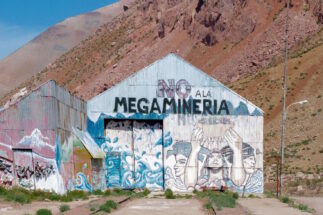The gap between environmental laws and environmental realities is widening in Latin America, as climate change, air and water pollution, deforestation and biodiversity loss become more urgent, according to a recent report by The Inter-American Development Bank (IDB) and the World Justice Project.
The research analysed the institutions and rules that regulate environmental protection, known as environmental governance, in 10 Latin American countries – Argentina, Bolivia, Brazil, Colombia, Costa Rica, the Dominican Republic, El Salvador, Jamaica, Peru and Uruguay. Although all have incorporated environmental legislation, the report found serious weaknesses in implementation.
“We focused on analysing the state of law enforcement, what happens when there is a breach of those laws, and what processes citizens or companies can use to go to court when they disagree with certain policies,” said Alejandro Ponce, one of the report’s authors.
On a scale of 1 to 10, with 10 being the most serious, across all countries the report awarded scores for water pollution and deforestation of 8.1 and 8, respectively. At least one of these issues ranks first or second place in the countries studied. Climate change and endangered terrestrial flora and fauna follow.
Citizen participation is more than just prior consultation. It is co-creating policies taking into account environmental impact
The report also identified agriculture and the mining industry the activities that represent the greatest potential threat to the environment, with regional averages of 8.4 and 7.7, respectively. Overfishing also received a high score.
Although countries have made progress in conducting environmental impact studies, the report said they must include more detailed explanations of governments’ decision on projects. Citizen organisations and indigenous groups also need to be consulted properly.
Attacks on environmental defenders were also highlighted in the report. In 2019, some 150 environmentalists were killed in Latin America, according to the organisation Global Witness.
Environmental governance: From law to implementation
Asked by Diálogo Chino about the widespread gap between environmental laws and their proper implementation in Latin America, Ponce said: “There is a lack of resources and qualified personnel in the environmental parts of governments. Coordination with other agencies is a problem and there is a lack of transparency and accountability.”
However, the research showed that most countries in the region have made progress in passing environmental laws and on those relating to access to information. For Ponce, Latin America is “halfway” towards achieving good levels of environmental governance.
“Citizen participation is more than just prior consultation. It is co-creating policies taking into account environmental impact and incorporating what comes out of those consultations. That is still a long way off,” he said.
The report highlights the cases of Uruguay and Costa Rica, which have many good indicators, such as accountability, transparency, combating corruption, and forest and biodiversity conservation. Among the challenges common to all the countries, ocean management received poor ratings across the board.
Natalia Gómez Peña, an advocacy officer at civil society group Civicus, a global alliance of NGOs, highlighted environmental conflicts in the region generated by large infrastructure projects. “They are not planned with the rights of the populations affected in mind. That is why it is key that the financing institutions and investors incorporate environmental governance indicators,” she said.
86
the number of Chinese-financed infrastructure projects in Latin America (2005-2019)
Latin America’s two main sources of infrastructure finance are the Inter-American Development Bank (IDB) and China. Between 2005 and 2019, China financed 86 infrastructure projects in the region worth nearly US$80 billion, according to the Latin American Academic Network on China’s 2020 Infrastructure Monitor.
Many of these investments have witnessed conflicts over their potential environmental impacts, such as the São Luis port in the Brazilian Amazon, dams on the Santa Cruz River in Argentine Patagonia, or the solar park in Mexico’s Yucatán peninsula.
Social licenses
For Andrés Nápoli, executive director of Argentina’s Environment and Natural Resources Foundation (FARN), environmental governance is about more than law enforcement. Top-level decisions and parliamentary approvals of projects are legitimised through civil society participation. “That is what many of the region’s ruling classes do not understand,” he said.
A case in point is the governor of Mendoza’s attempts to reform the Water Law in 2019 to allow open-pit mining in the province. The modification enabled the use of cyanide, sulphuric acid and other harmful substances in extraction that opponents said risked the contamination of water sources.
Although a sufficient number of legislators approved the reform, without a social license, the governor was forced to back down.
“It’s not enough with the projects that are supposed to improve employment or energise the economy, but other dimensions that have to do with sustainability must be taken into account and incorporated, because otherwise there will be widespread conflict,” Nápoli warned.
Escazú: strengthening environmental governance
The Escazú Agreement is an opportunity to bridge the gap between laws and their correct application, according to Gómez Peña of Civicus. “The agreement could give countries more tools to effectively implement those laws,” she said.
Escazú is the first regional environmental treaty that seeks to promote the rights of access to information, participation and justice in environmental matters. It is also the first agreement in the world to establish binding guarantees to protect those who defend human rights in environmental matters.
This agreement is expected to enter into force in 2021, 90 days after Argentina and Mexico, the latest countries to ratify, submit their ratifications to the UN.
Nápoli is optimistic about the treaty’s entry into force: “Escazú is a response to the region’s environmental problems. The countries will have to be accountable for what they are doing, commit themselves to improvements and civil society will be able to make direct demands that will speed up national processes”.
Ponce said their report’s environmental governance indicators underscore the need for the agreement: “Our study serves to show with evidence what exists and what is lacking in the central issues of Escazú: information, participation and access to justice.”









